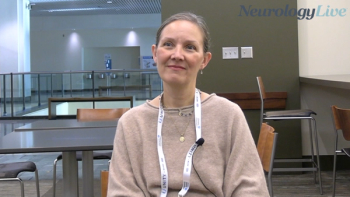Newly published in the Journal of Clinical Neuroscience, a meta-analysis demonstrated that patients with neuromyelitis optica spectrum disorder (NMOSD) had significantly lower serum 25(OH)D levels compared with the healthy controls. These findings suggest that impaired immune tolerance because of vitamin D deficiency is involved in the pathogenesis of NMOSD and thus, routine vitamin D supplementation may be advantageous for patients.1
Among 6 studies with 794 participants (NMOSD group, n = 347; healthy control group, n = 447), the NMOSD group showed significantly lower serum 25(OH)D levels (mean difference [MD], -7.83; 95 % CI, -10.99 to -4.68). At different stages of NMOSD, the levels of 25(OH)D during both the acute phase (MD, −8.86; 95 % CI, −13.05 to −4.67) and the remission phase (MD, −7.45; 95 % CI, −12.91 to −1.99) were significantly reduced compared with the healthy control group.
“In the studies included, it was observed there were more studies focusing on the acute phase and fewer studies on the remission phase. This could be attributed to 2 main reasons, differences in study design and challenges in clinical practice. Researchers may have different focuses when designing their studies, with some primarily interested in the 25(OH)D levels during the acute phase of the disease while overlooking the remission phase,” senior author Junjie Yin, MD, professor of neurology, Hunan University of Medicine General Hospital, in China, and colleagues wrote.1 “Data collection during the acute phase is relatively easier as patients actively seek medical attention. However, during the remission phase, patients are often outside the hospital, and the ability to collect relevant data in the specified timeframe is closely related to patient cooperation. This significantly increases the difficulty and time constraints of data collection.”
Top Clinical Takeaways
- The meta-analysis underscores the potential benefits of routine vitamin D supplementation for patients with neuromyelitis optica spectrum disorder.
- Difficulties in collecting data during the remission phase highlight the need for innovative approaches and increased patient cooperation in research on NMOSD.
- The study prompts future investigations focusing on early blood sample collection, expanding research beyond Asian regions, and exploring the relationship between 25(OH)D and patients with AQP-4-IgG seronegative NMOSD.
READ MORE: Study Reveals Reasons for Increased Hospital Readmission Rates in NMOSD
Investigators searched English and Chinese databases including PubMed, Embase, Cochrane Library, Web of Science, CBM, CNKI, WanFang Med, and VIP for observational studies published up to August 24, 2023, related to serum 25(OH)D levels in NMOSD. Studies with healthy controls and compared serum 25(OH)D levels between patients with NMOSD and controls were included in the analysis. The researchers computed the MD and 95% CI for continuous variables to assess serum 25(OH)D levels and combined odds ratios (ORs) and 95% CIs for dichotomized 25(OH)D data.
The analysis also showed that the risk of 25(OH)D deficiency was 23.36 times higher in the NMOSD group (95 % CI, 0.85-640.76; P = .06>.05), with a 94% occurrence rate, compared with the healthy controls. Overall, the authors noted that there was no significant difference in the risk of having sufficient 25(OH)D between both of the groups (P = .12>.05).
All told, the findings did not demonstrate a causal relationship but rather revealed a reduction in 25(OH)D levels in the NMOSD population. The authors suggest that having minimal sunlight exposure because of severe physical disability might cause patients to stay indoors for extended periods, which then results in decreased synthesis of 25(OH)D.2 The study was also limited by the lack of findings on the long-term effect of therapies such as glucocorticoids or immunosuppressants on serum 25(OH)D in patients with NMOSD. Also, there were few relevant data for regions other than the Asian region, which may lead to varying levels of 25(OH)D.3,4 The authors also that the study did not provide data for grouping based on aquaporin 4-reacting autoantibody (AQP-4-IgG) status since risk factors between AQP-4-IgG seronegative and seropositive patients may be different.5
“Future research could consider the following points in relation to 25(OH)D and NMOSD. First, distinguishing whether 25(OH)D deficiency is a risk factor for the disease or a concomitant outcome may be possible by collecting blood samples early in the development of NMOSD before it significantly affects the patient's daily life. This approach would also help to rule out any potential drug interference with 25(OH)D levels,” Yin et al noted.1 “Second, it is worth noting that the number of studies exploring the relationship between 25(OH)D and NMOSD is relatively limited. Therefore, it is expected that further studies will be conducted in the future, with a specific focus on nonAsian regions, to refine these findings. Third, it is hoped that more studies on the relationship between 25(OH)D and AQP-4-IgG seronegative NMOSD will be included in future research.”
REFERENCES
1. Liu S, Tan B, Zhou J, Xiao L, Li M, Yin J. Vitamin D status and the risk of neuromyelitis optica spectrum disorders: A systematic review and meta-analysis. J Clin Neurosci. 2024;119:185-192. doi:10.1016/j.jocn.2023.12.010
2. Dimitrov V, White JH. Species-specific regulation of innate immunity by vitamin D signaling. J Steroid Biochem Mol Biol. 2016;164:246-253. doi:10.1016/j.jsbmb.2015.09.016
3. Egan KM, Signorello LB, Munro HM, Hargreaves MK, Hollis BW, Blot WJ. Vitamin D insufficiency among African-Americans in the southeastern United States: implications for cancer disparities (United States). Cancer Causes Control. 2008;19(5):527-535. doi:10.1007/s10552-008-9115-z
4. Mowry EM, James JA, Krupp LB, Waubant E. Vitamin D status and antibody levels to common viruses in pediatric-onset multiple sclerosis [published correction appears in Mult Scler. 2011 Dec;17(12):1539]. Mult Scler. 2011;17(6):666-671. doi:10.1177/1352458510394398
5. van Pelt ED, Wong YY, Ketelslegers IA, Hamann D, Hintzen RQ. Neuromyelitis optica spectrum disorders: comparison of clinical and magnetic resonance imaging characteristics of AQP4-IgG versus MOG-IgG seropositive cases in the Netherlands. Eur J Neurol. 2016;23(3):580-587. doi:10.1111/ene.12898



































